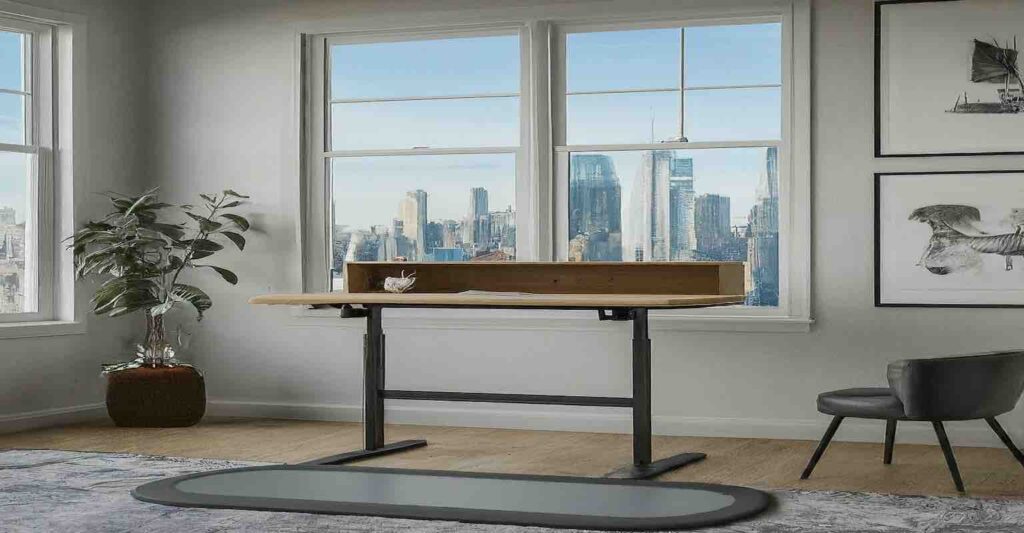Forget the hustle culture glorification of all-nighters and endless emails. There’s a quiet rebellion brewing, a movement fueled not by caffeine and ambition but by a rediscovery of the simple act of walking. Search volumes for “walking pads” have skyrocketed by a staggering +7700%, a testament to this unexpected hero of the work-from-home era. We have selected this product as a part of verified ideas, and have our attention.
The Productivity Paradox: When Sitting Becomes the Enemy of Success
The irony is palpable in the age of “get things done” gurus and productivity hacks. Our relentless pursuit of efficiency has backfired, with research painting a grim picture of the health consequences of a sedentary lifestyle. Studies published in the American Council on Exercise prolonged sitting to a decline in cognitive function, decreased creativity, and an increased risk of burnout.
The irony is that the behaviors we associate with productivity – long hours glued to screens – erode our ability to perform at our best.
The Walking Pad: A Stealthy Disruptor
Enter the walking pad, a seemingly innocuous device that’s quietly disrupting the status quo. It’s not about replicating the intensity of a HIIT workout or chasing the elusive six-pack. The beauty of the walking pad lies in its subtlety. It allows us to incorporate low-impact movement seamlessly into our workday, a gentle nudge towards a healthier and potentially more productive way of working.
From Cubicles to Treadmill Desks: A Micro-Movement Revolution
The rise of the walking pad is part of a larger movement towards micro-movements – small bursts of activity integrated into our daily routines. Standing desks, once a niche ergonomic solution, are now becoming commonplace. Companies are experimenting with “activity breaks,” encouraging employees to take short walks or perform simple stretches throughout the day.
Fitness trackers have transformed from gym accessories to gentle reminders. Their discreet nudges – a vibration on your wrist urging you to stand up and take a few steps – are a subtle rebellion against the tyranny of the chair.
The Science of Movement: How Walking Boosts Brainpower
But the benefits extend beyond simply avoiding the health risks of sitting. Research published in the Journal of Applied Physiology suggests that even light-intensity walking can improve cognitive function and memory. Another study published in Nature ([3]) found that walking can increase creativity, spark new ideas and promote problem-solving abilities.
In a world obsessed with productivity hacks, the walking pad offers a surprisingly low-tech solution with a high potential payoff. It reminds us that movement isn’t a luxury but a vital component of optimal brain function and, ultimately, peak performance.
The Future of Work: Beyond the Treadmill Desk
The walking pad phenomenon is a broader shift’s first step (pun intended). Imagine workplaces designed to encourage movement, with integrated walking paths and “active meeting rooms” that incorporate light exercise into brainstorming sessions.
Technology will play a crucial role in this future. Smart walking pads could sync with your work calendar, prompting you to take a walking break before a long meeting. Virtual reality experiences could transport you to a scenic beach walk while you tackle a complex project.
The walking pad craze signifies that we’re rethinking the traditional work model. It’s a testament to the power of tiny changes and a reminder that sometimes, the most effective productivity hack is simply taking a step forward.
How Walking Pads Hacked the Productivity Myth
Beyond the Hype: Practical Considerations and Safety Tips
The surge in walking pad popularity has, naturally, sparked conversation and debate. Here are some key considerations to keep in mind:
- Finding the Right Fit: Walking pads come in various sizes and with different features. Consider your workspace limitations, budget, and fitness goals when choosing a model.
- Safety First: Walking pads are generally safe for most healthy individuals. However, if you have any pre-existing health conditions, consult your doctor before using one. Additionally, ensure your walking area is clear of obstacles and wear proper footwear for stability.
- Listen to Your Body: Start slowly and gradually increase the intensity and duration of your walking sessions. Pay attention to your body’s signals – take a break if you experience any pain or discomfort.
- Ergonomics Matter: While walking is beneficial, proper posture remains crucial. Ensure your desk height is adjusted for a comfortable walking stride, and maintain good posture with your shoulders relaxed and core engaged.
- Not a Replacement for Exercise: The walking pad should differ from your regular exercise routine. Think of it as a way to increase your daily activity levels and combat the adverse effects of sitting for extended periods.
Beyond the Office: A Boon for Remote Workers and Beyond
The benefits of walking pads extend far beyond the traditional office setting. Remote workers can use them to break up the monotony of working from home. Students can incorporate walking into their study sessions to boost focus and retention. Even those with limited mobility can find low-speed walking on a pad a safe and effective way to increase physical activity.
The Walking Pad Community: Sharing Tips and Finding Support
The rise of the walking pad has fostered a growing online community. Social media groups, online forums, and fitness blogs are filled with users sharing their experiences, offering tips on maximizing the benefits of walking pads, and providing encouragement and support.
Looking Ahead: A More Active Future
The walking pad craze is a sign of a cultural shift. We’re moving away from glorifying a sedentary lifestyle and embracing the power of movement. As research explores the connections between physical activity, cognitive function, and overall well-being, we can expect to see even more innovative solutions emerge, helping us integrate movement seamlessly into our daily lives.
Have you tried a walking pad? Share your experiences and tips in the comments below! Let’s keep the Step Up Revolution moving forward, one step at a time.
Additional Resources:
This article has included links to authoritative websites throughout the text. Here are some additional resources you can explore to learn more about walking pads, ergonomics, and the science of movement:
- American Council on Exercise: https://www.acefitness.org/resources/everyone/exercise-library/
- Mayo Clinic: https://www.mayoclinic.org/healthy-lifestyle
Harvard Health Publishing: https://www.health.harvard.edu/

